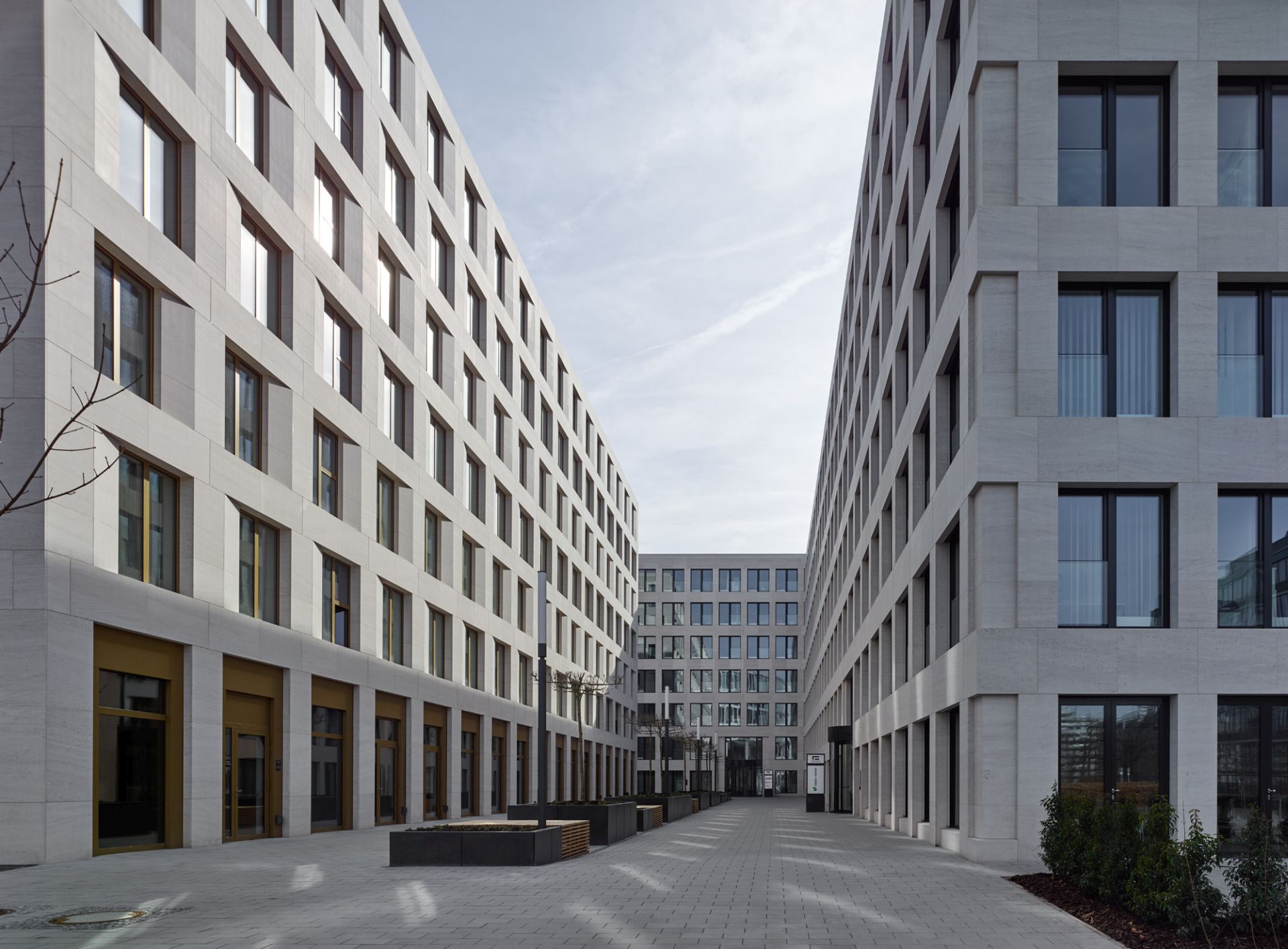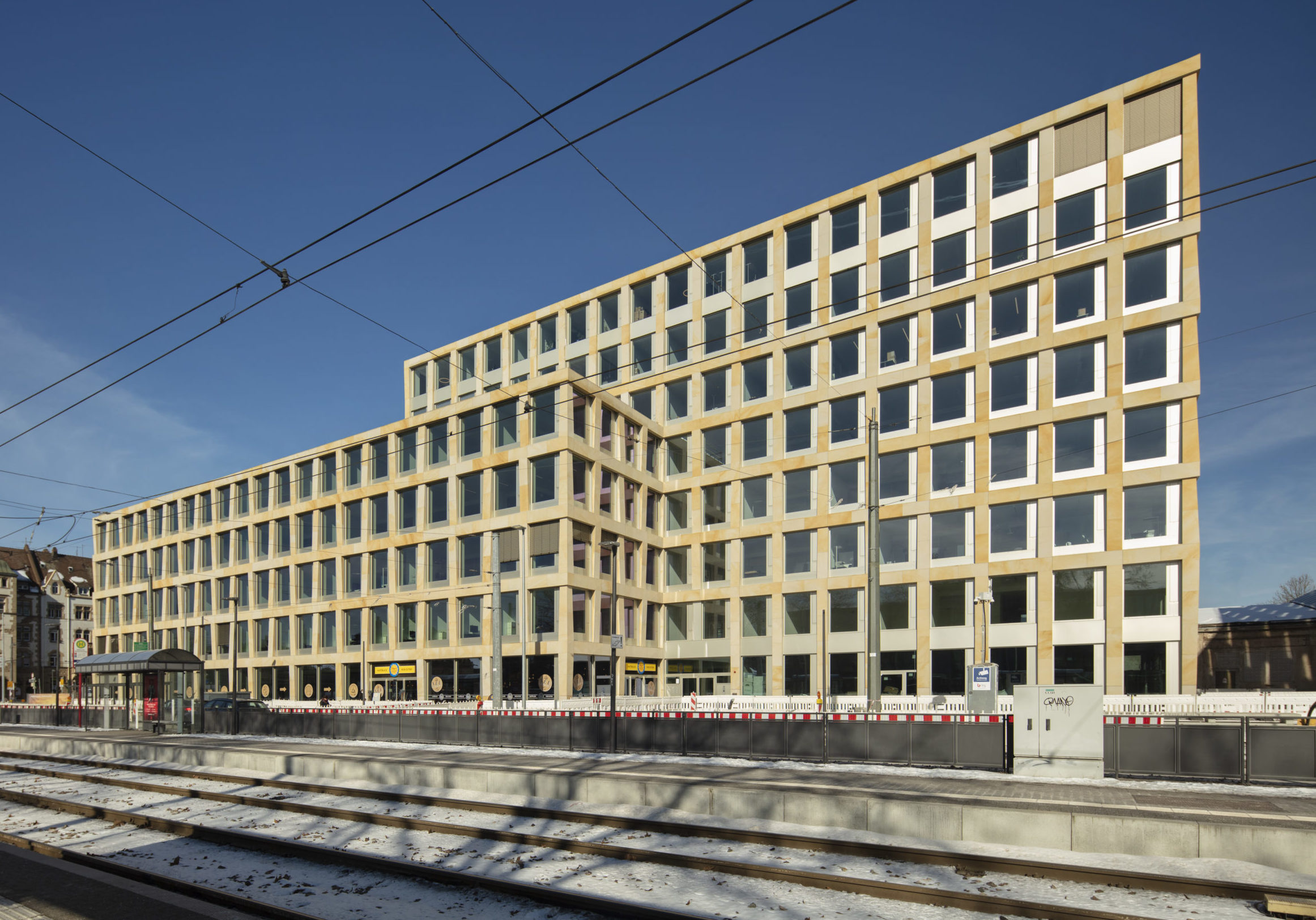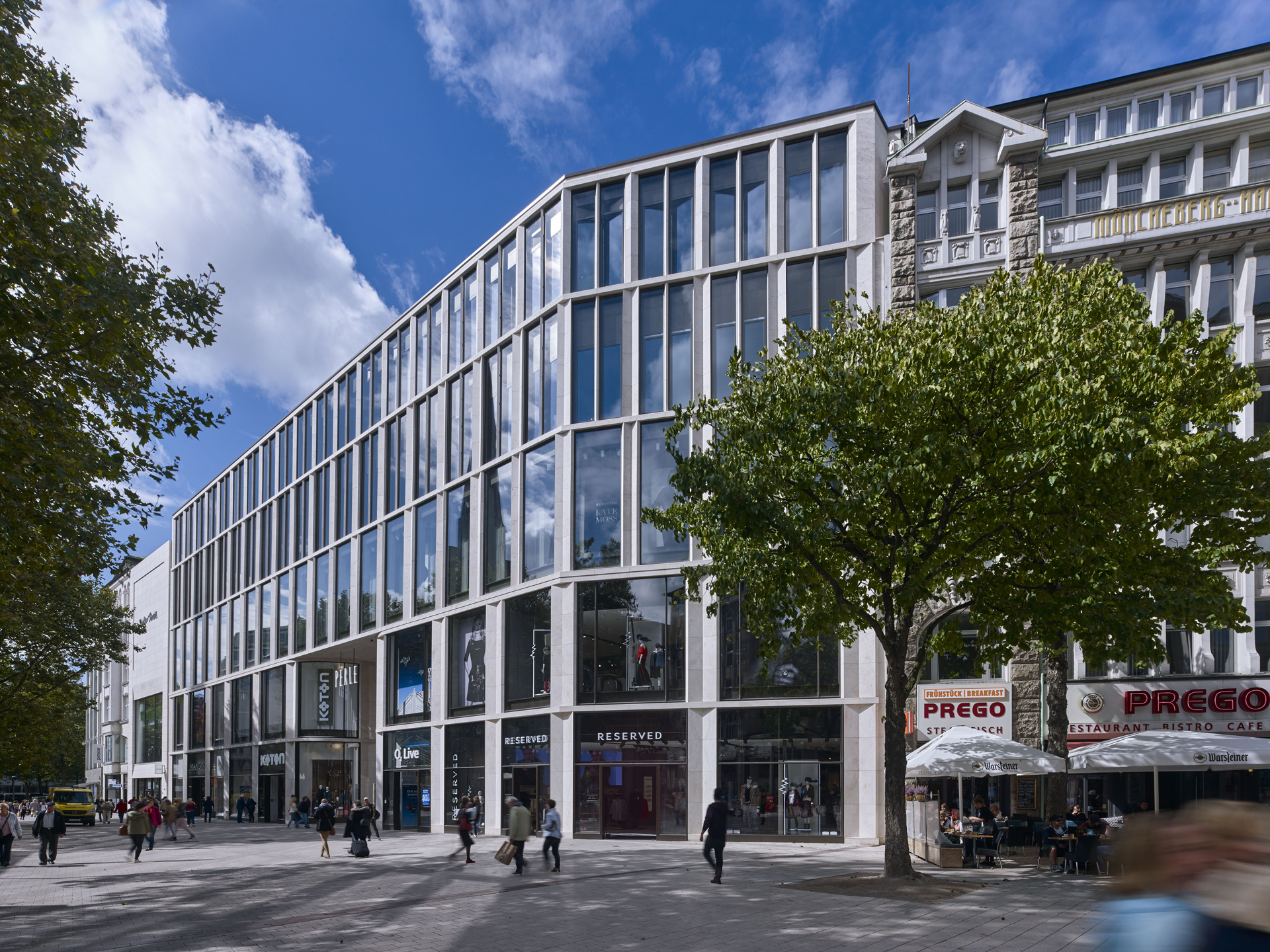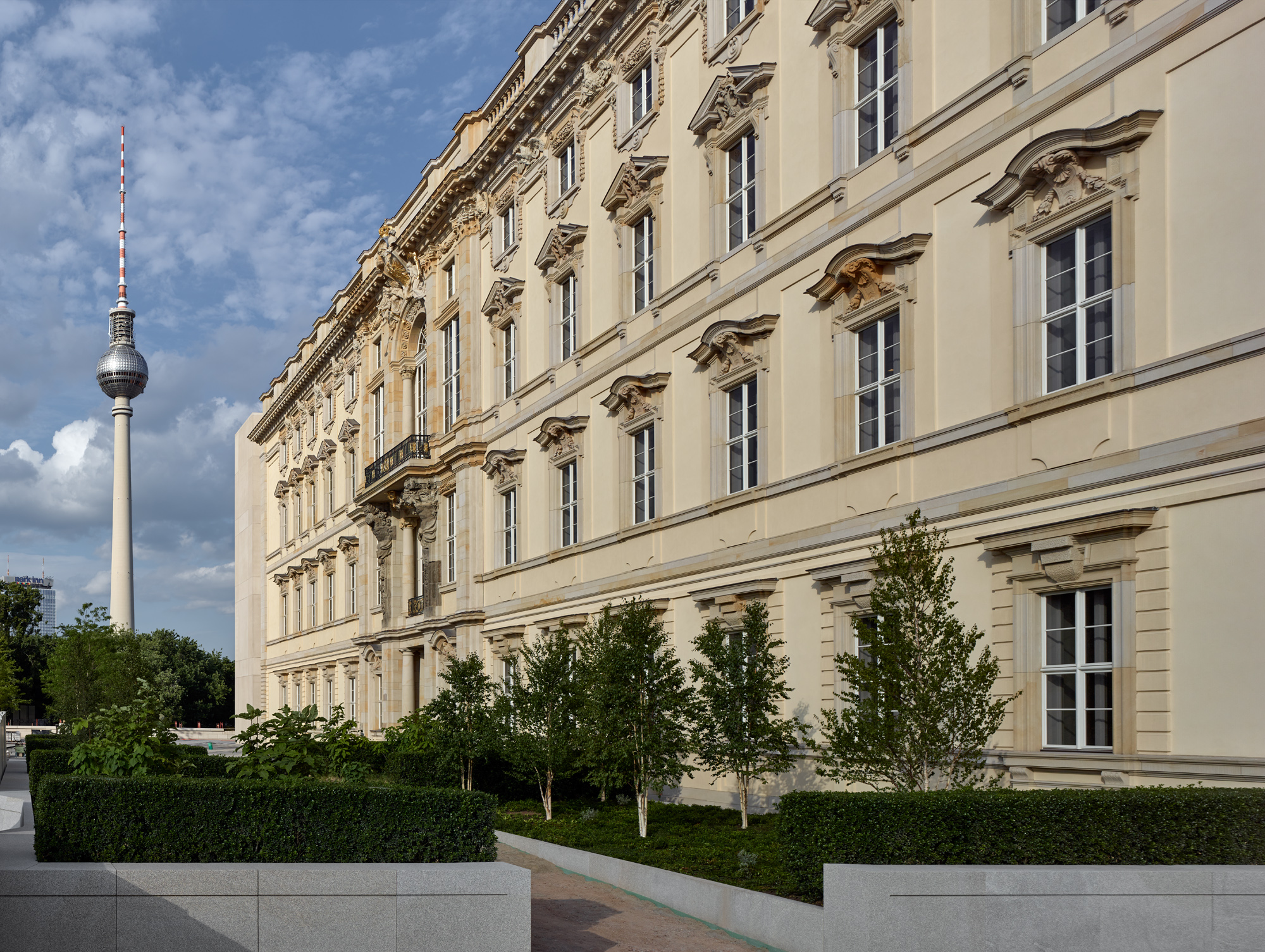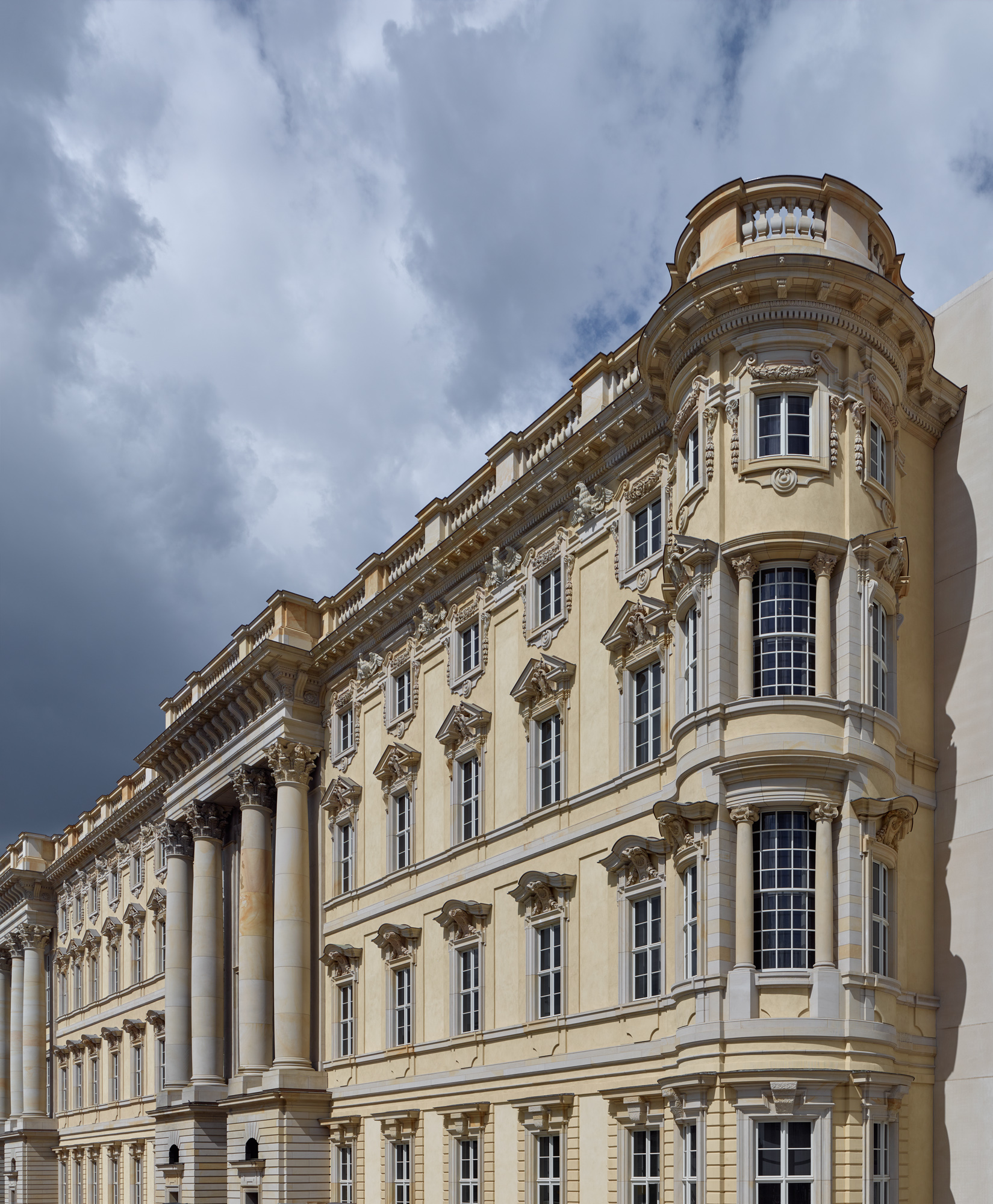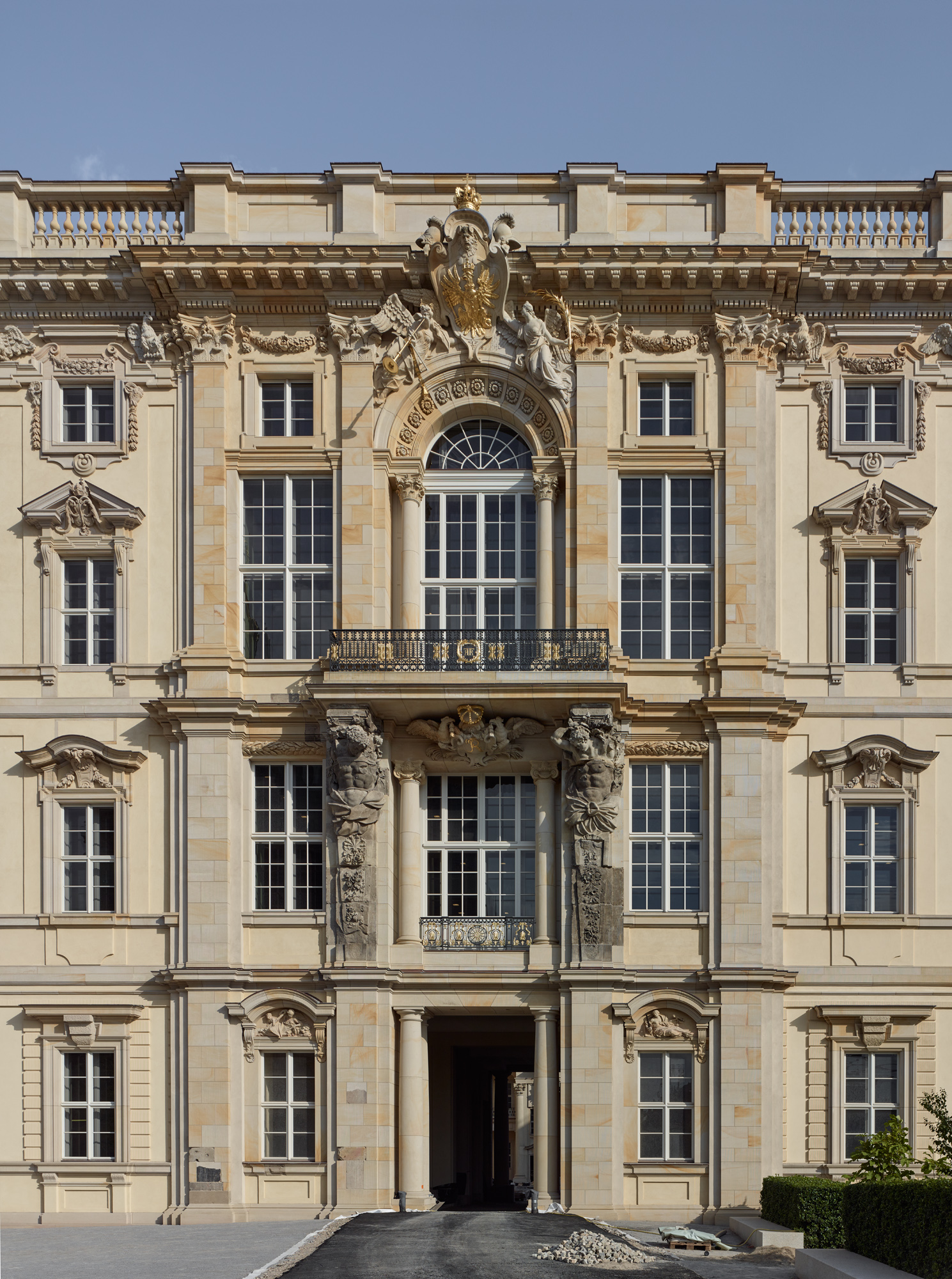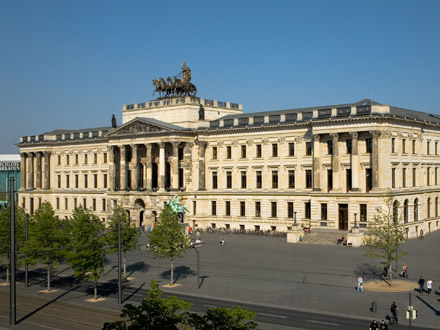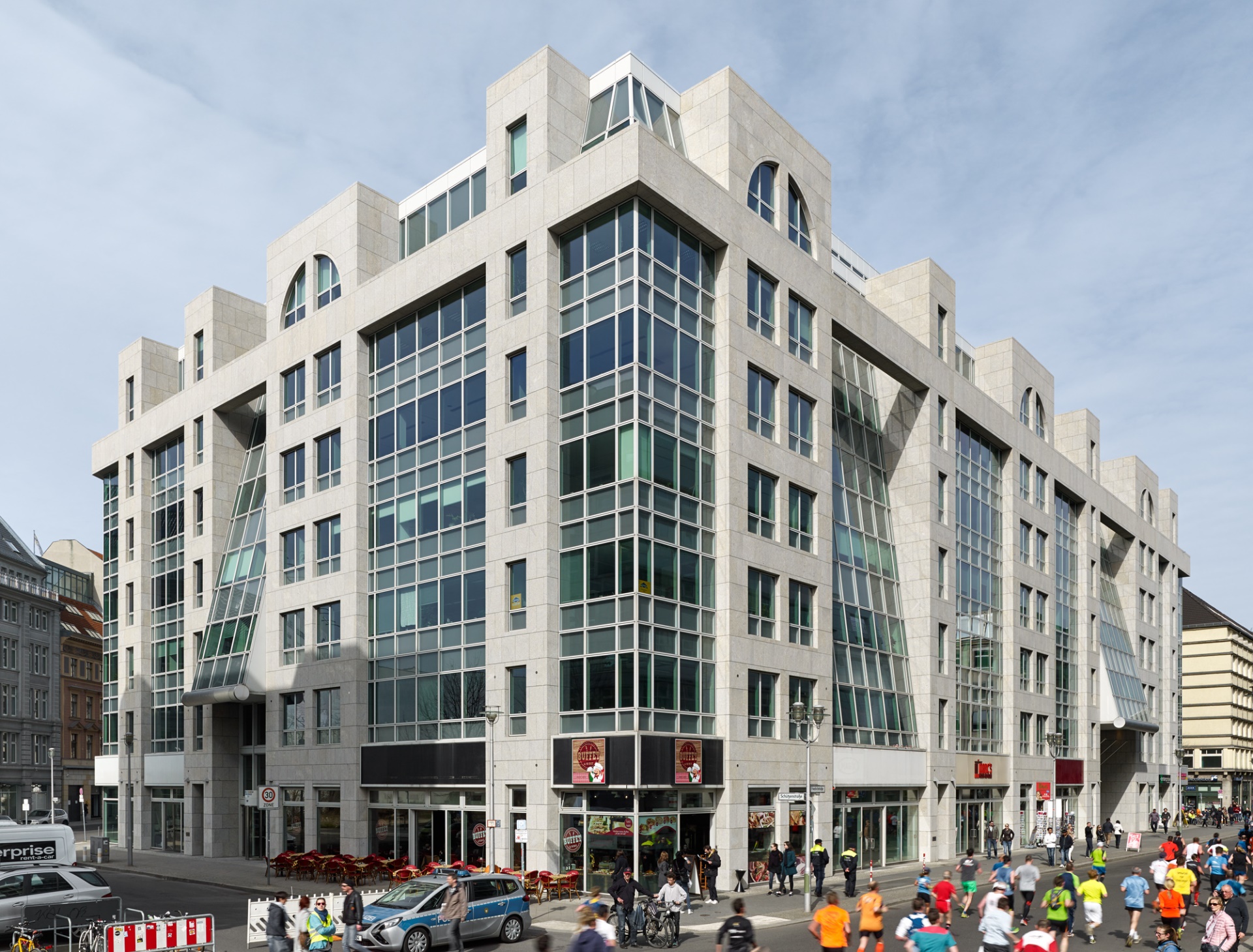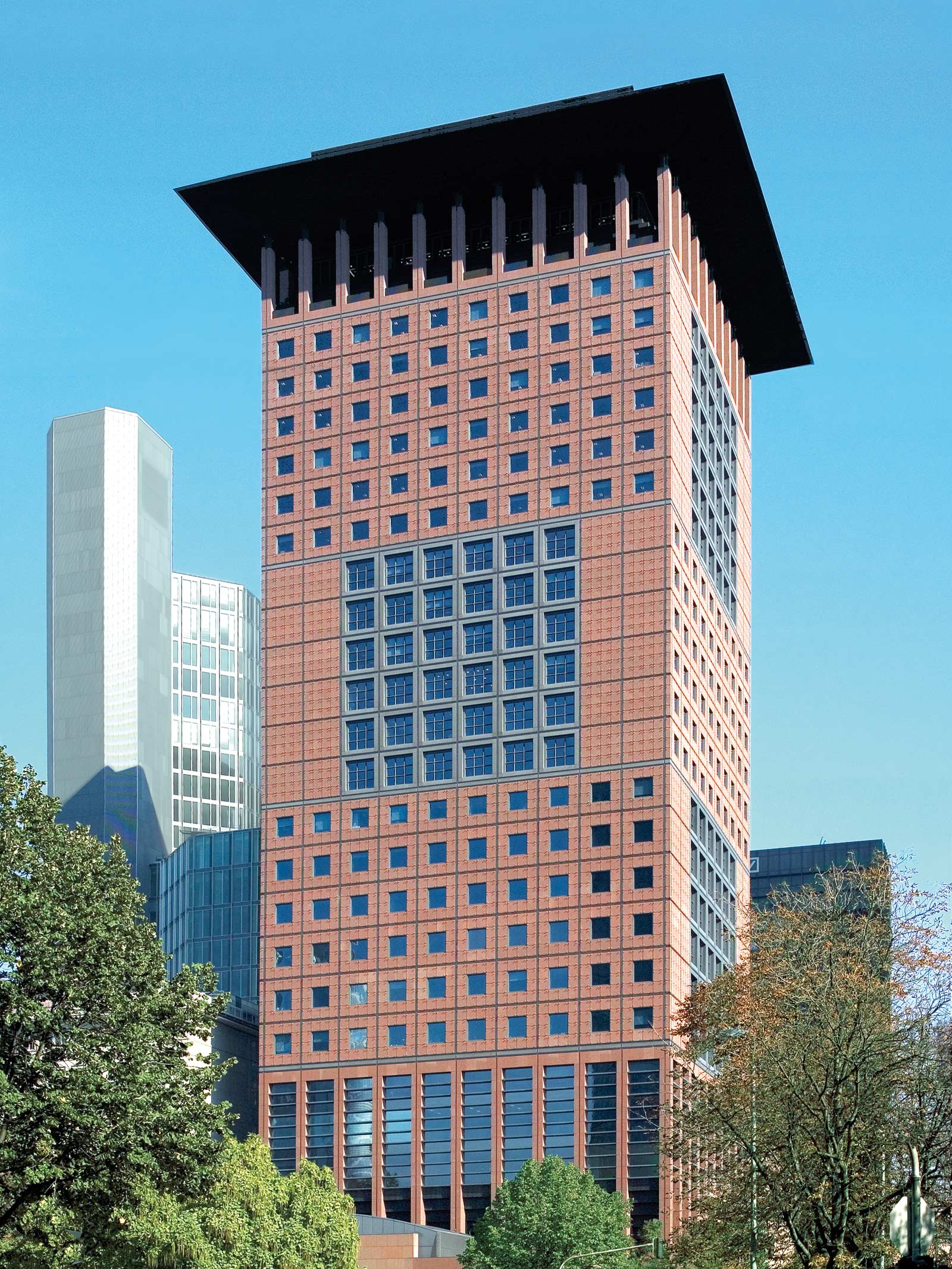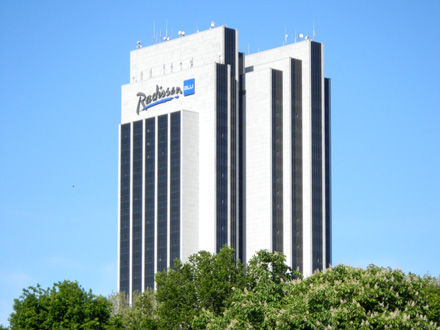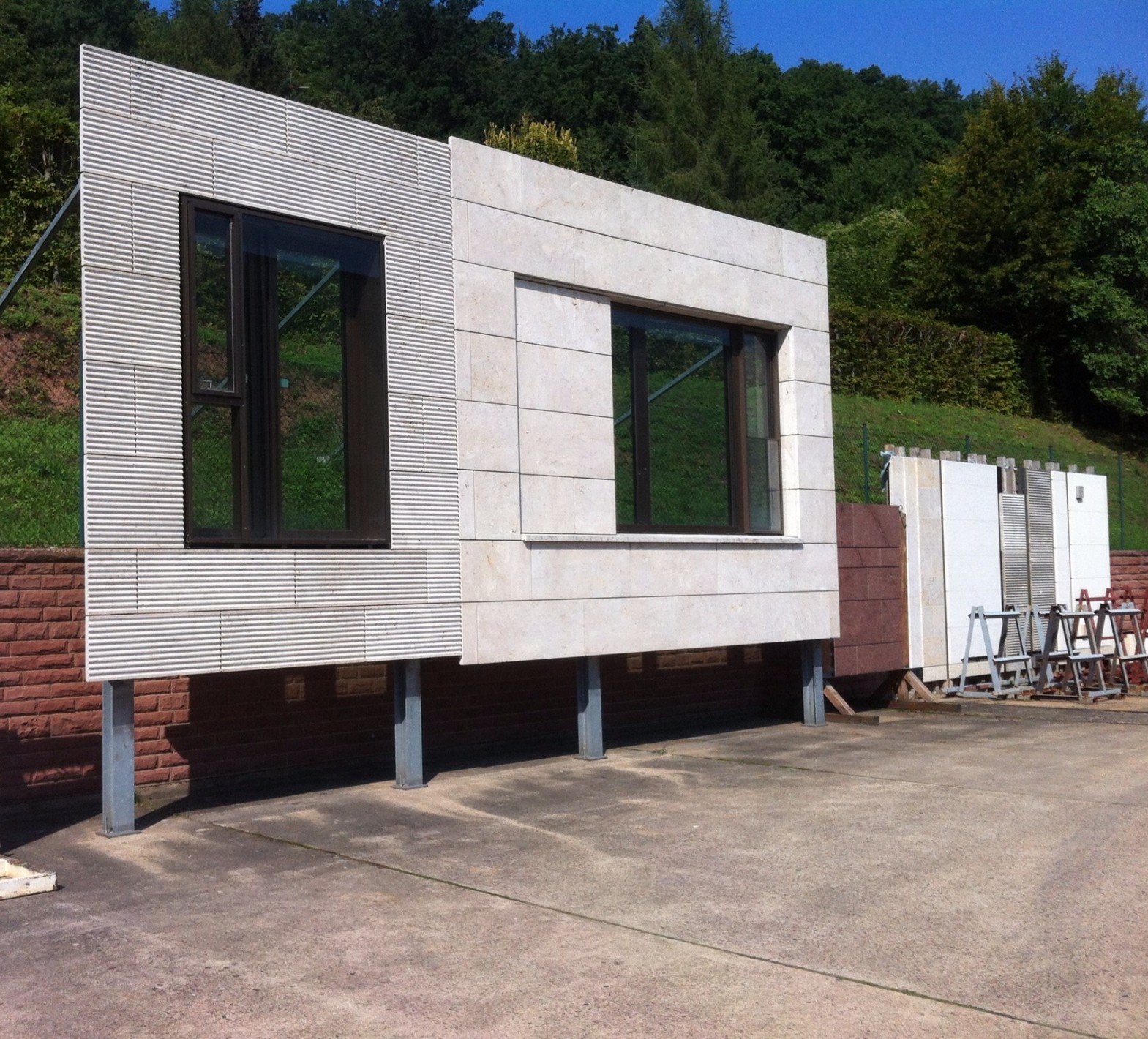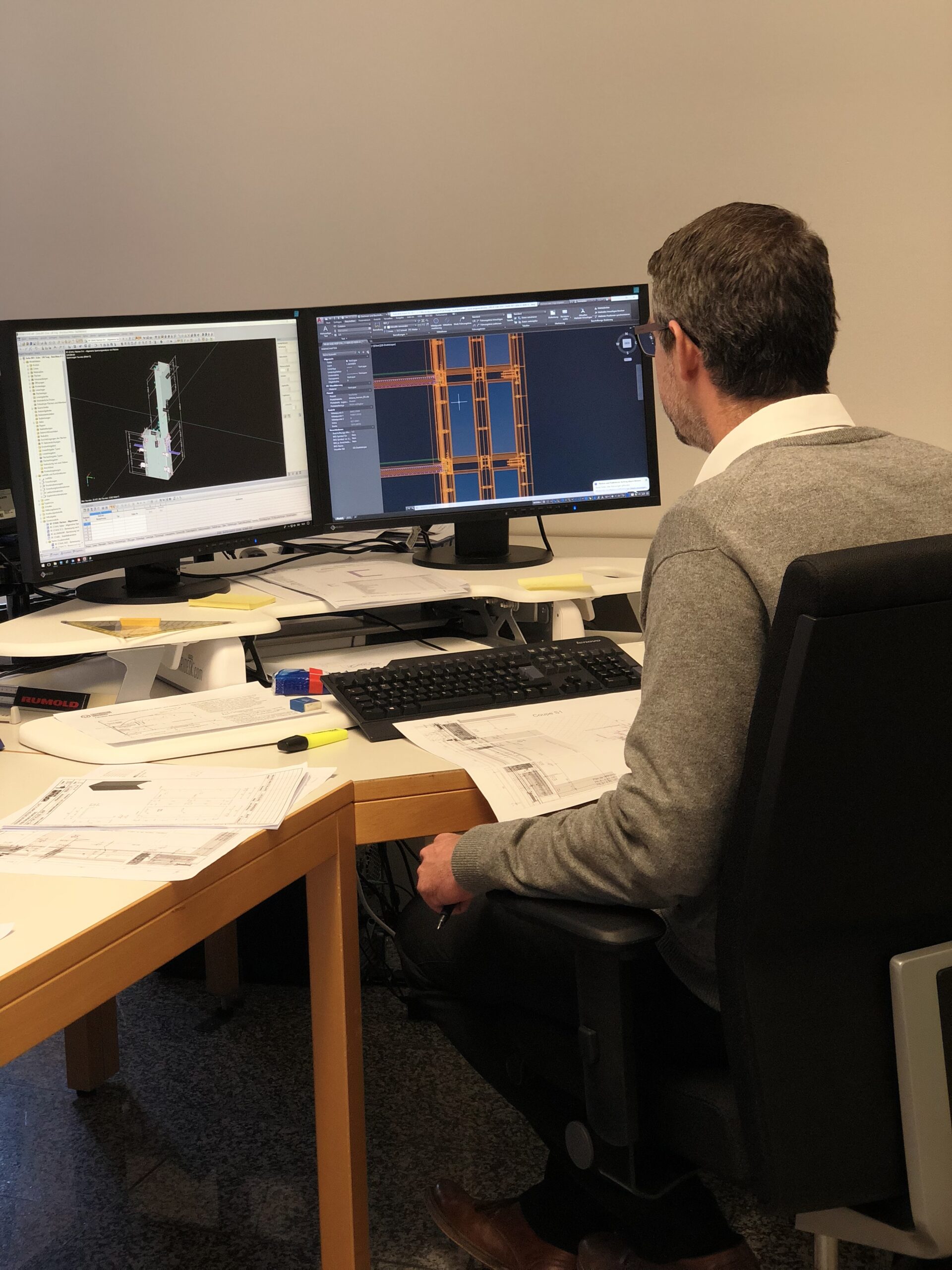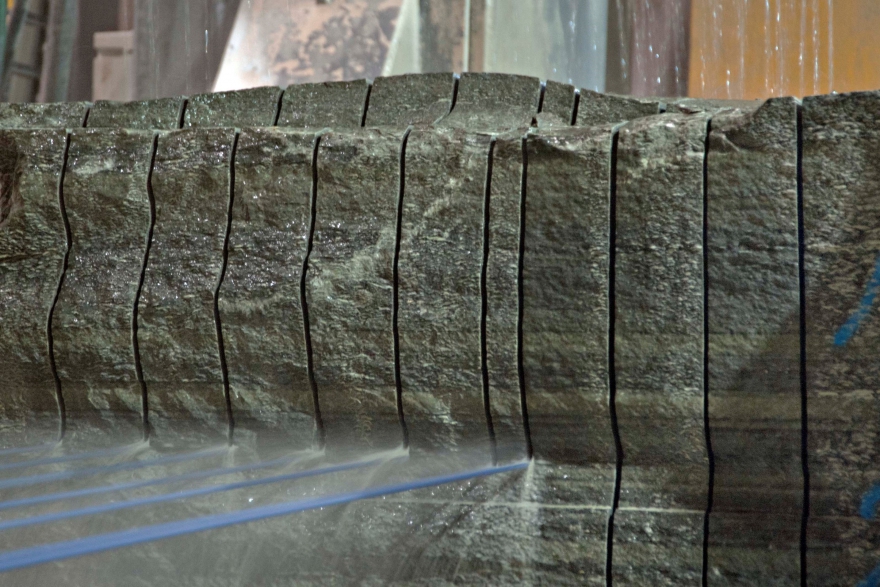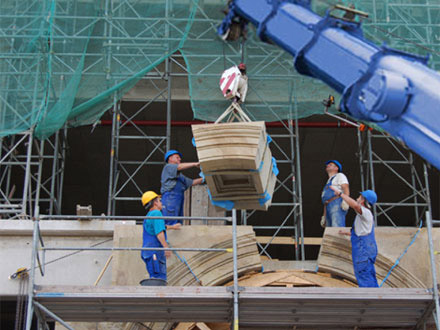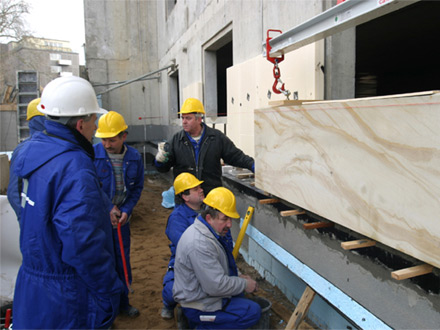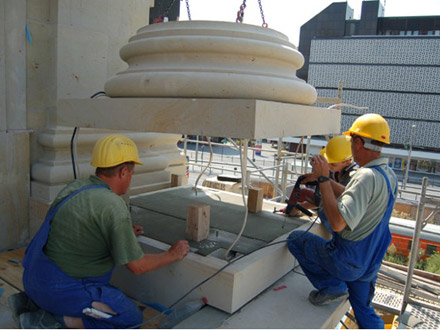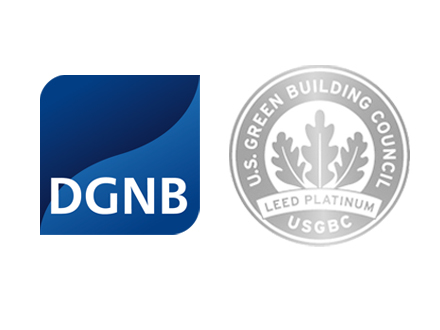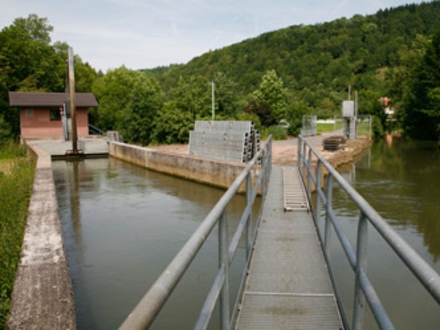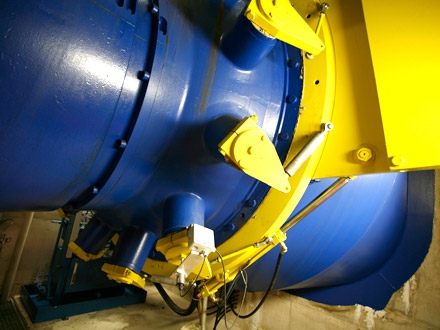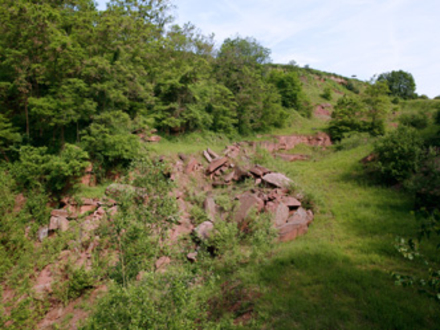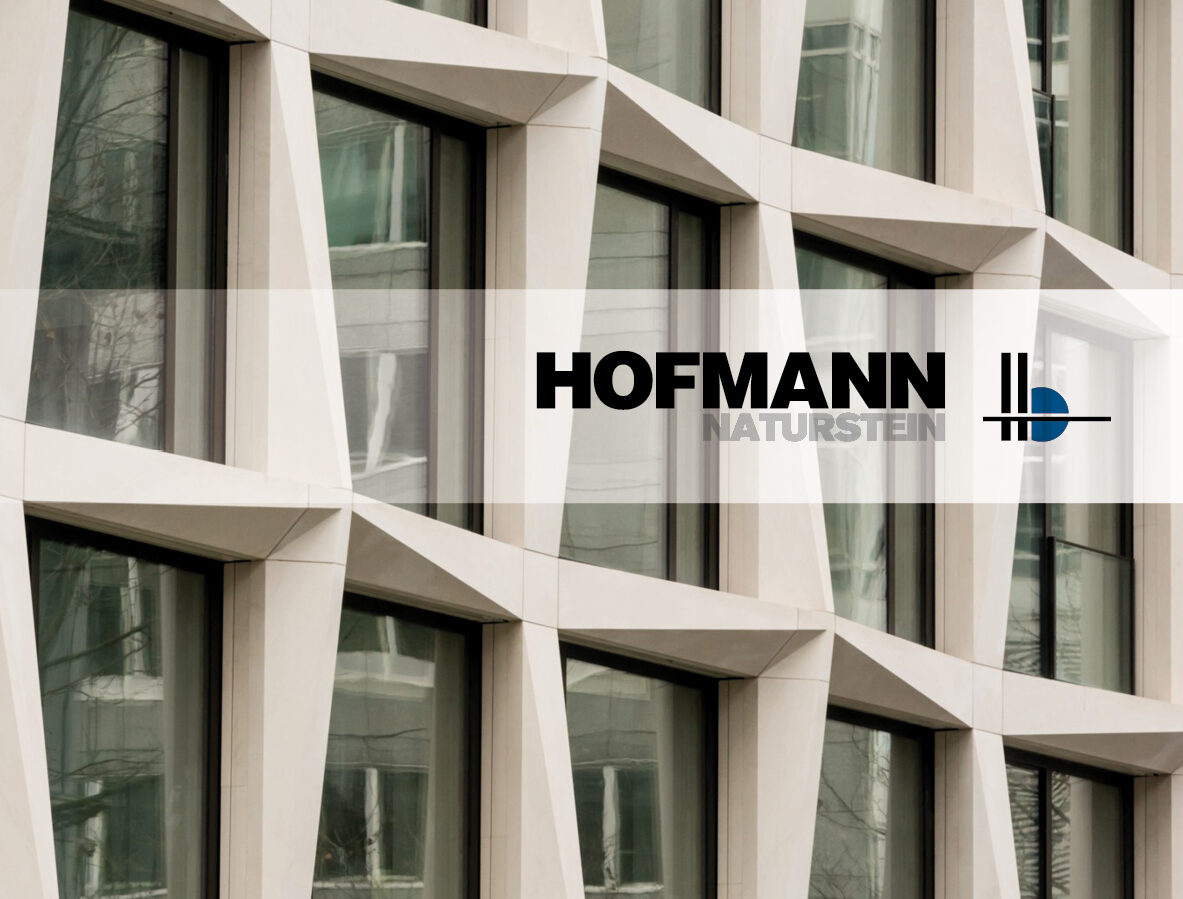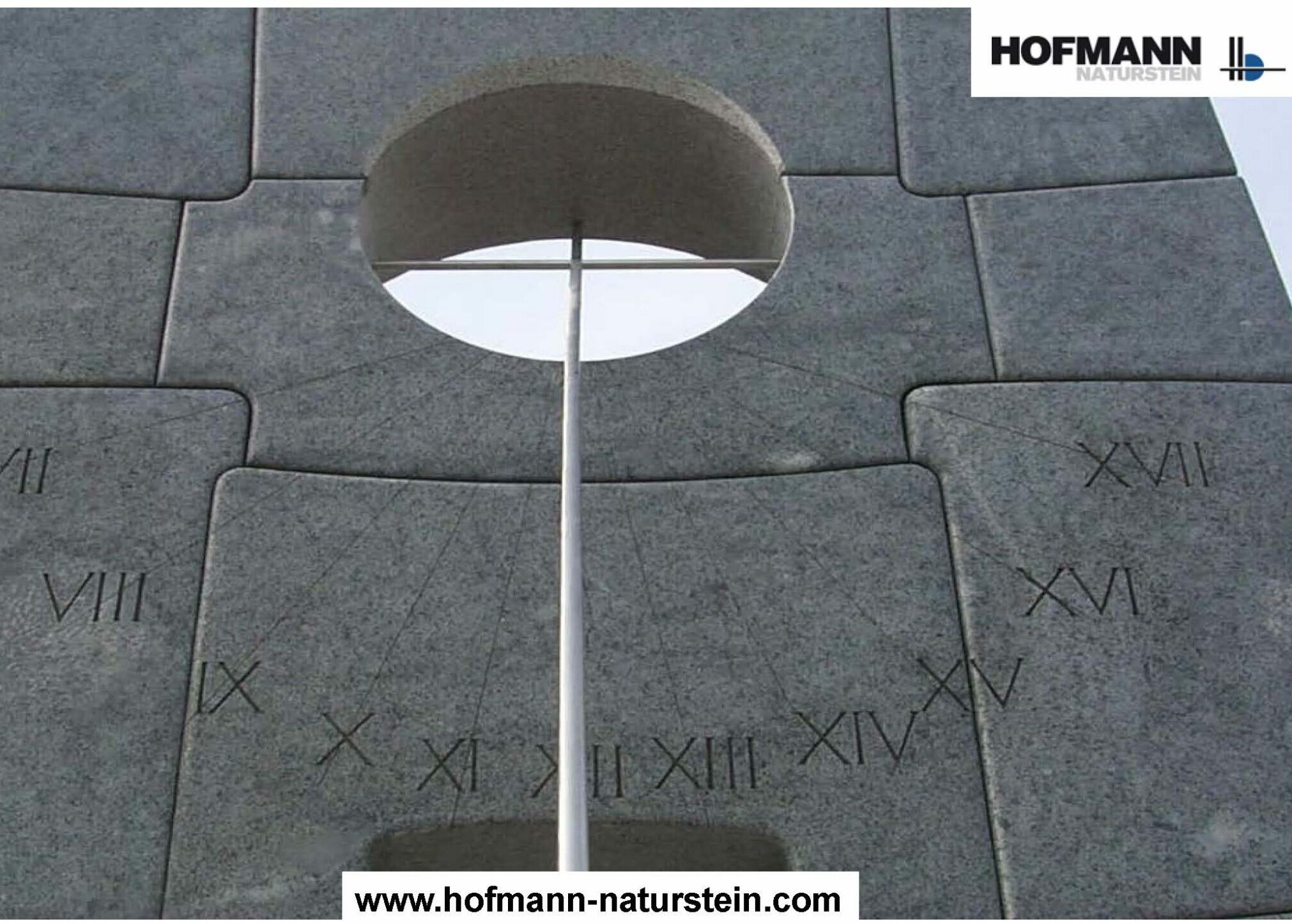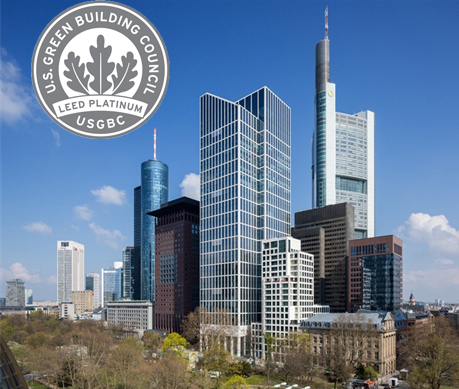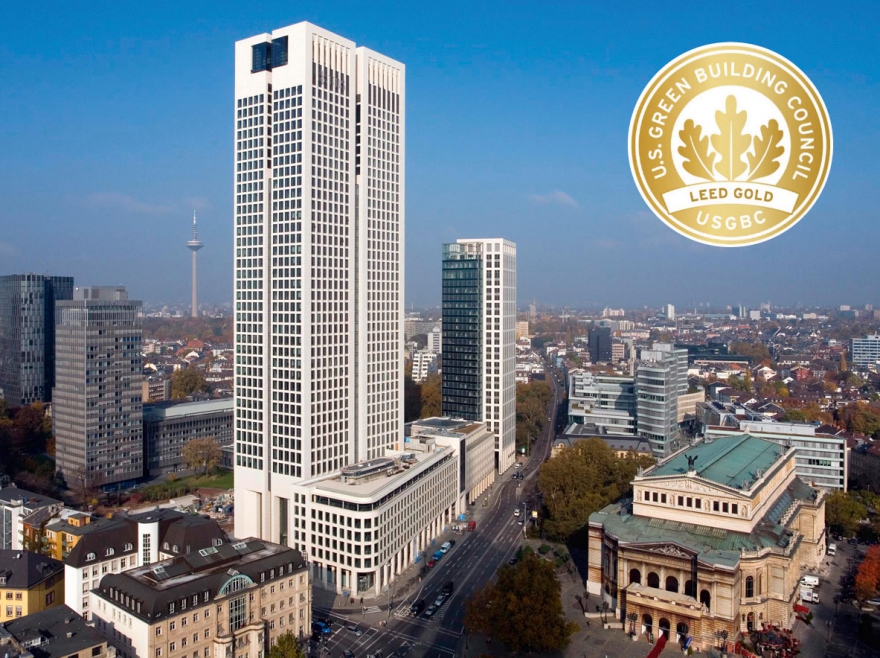Areas of specialisation
- 1
- 2
- 3
- 4
- 5
- 6
Natural stone façade
The focus of our activity is the external natural stone façade. Every year we complete approximately 100 rear-ventilated and insulated façades to the most exacting standards and for projects of any size. Aside from creating complete natural stone façades we also produce natural stone cladding elements in cooperation with glass and metal manufacturers.
Detailed services:
- Engineering, production and installation of natural stone façades including fixture or supporting structure according to DIN 18516-3.
- Execution of insulation of the rear-ventilated stone façade according to the applicable energy saving regulations (ENEV).
- Conformance of the natural stone and the façade structure with the requirements of DGNB / LEED.
- 1
- 2
- 3
- 4
NATURAL STONE – SOLID CONSTRUCTION / RESTORATION / BUILDING IN STOCK
Our company has many years experience in the execution of natural stone work in solid construction. We can refer to considerable references in the range of reconstruction, building in stock and new building in solid construction. We uniting in our plants as a certified and excellent training firm the traditional stonemasonry with a modern processing technology.
Detailed services:
- Massive stone blocks
- Staircases and coping stones
- Walls complying with DIN 1053
- Columns, framing, ledges and capitols
- 1
- 2
- 3
- 4
FAÇADE REVITALISATION AND FACILITY MANAGEMENT
Our company specializes in the revitalization of existing façades. Our competent field service personnel execute under survey of our experienced construction manager a renewal of complete constructions of façades according the current ENEV and DIN 18516-3 and brings thereby the façade visual up to speed.
Façade revitalisation – detailed services:
- Revitalisation of existing façades
- Renovations compliant with ENEV energy-efficiency standards
- Façade inspections and surveying
Expertise
HOFMANN STONE has comprehensive expertise and decades of experience in the extraction, processing and installation of natural stone. From consultation and materials selection to skilled installation we expertly support our customers at every stage of a project.
CONSULTATION AND SELECTION
Natural stone is the basic material of our planet the complete earth crust consists of this. For the architecture opened natural stone multifaceted and fascinated applications. It is characterised by its great range of colours, textures and surface details, as well as by its structural properties. To help our customers with the selection of the right material, we offer a comprehensive and competent consultation. To aid this decision-making process further, we provide access to HOFMANN STONE’s library of over 5,000 natural stone samples as well as a number of large-scale sample façades.
DESIGN AND ENGINEERING
Our in-house engineers use computer-assisted design (CAD) to convert architectural plans into finished blueprints incorporating all statics and anchoring details. The CAD data control state-of-the-art computer-assisted manufacturing (CAM) production lines at our plants located in Gamburg, Niklashausen, and Warthau.
PRODUCTION
Our state-of-the-art CAM-controlled production lines cut the natural stone to the specified size. Various surfacetreatment techniques such as “water jet” or “hand cleaved” give the stone its own special character. In the finishing stages each piece is prepared for mounting. Our large production capacity and advanced logistics allow for the timely delivery of materials to construction projects of any size.
- 1
- 2
- 3
INSTALLATION AND SITE MANAGEMENT
Onsite installation is performed by our skilled fitters and supervised by our experienced foremen and quality control agents. Throughout the process, we strive to achieve the highest aesthetic and technical standards.
Sustainability
DGNB Gold and LEED Platinum – tomorrow’s standards
Sustainable building is a central consideration for architects, planners, and constructors, and increasing in importance. Foremost are ecological reasons: sustainable construction conserves precious resources and minimises energy usage and environmental cost. Yet sustainability also has economic advantages such as lower usage and repairs costs as well as a reduced depreciation. Since buildings are ultimately intended for their occupants, sociocultural considerations such as climate control and health & safety as well as aesthetics are of primary import.
Whether viewed from an economic, ecological or sociocultural perspective, green / sustainable building makes sense. It increasingly represents a mark of quality, a standard by which buildings are measured. Natural stone façades make though a crucial contribution to greater sustainability.
We offer architects and constructors the right solutions towards achieving DGNB or LEED certification.
- 1
- 2
Energy footprint
Natural stone – environmentally sound
Natural stone was created millions of years ago during planetary formation. In contrast to materials such as aluminium, steel and glass, natural stone does not need to be manufactured at great energetic cost. Energy expenditure is limited to carving stones from the seam and applying the desired surface-finishing. In terms of its total energy footprint, natural stone excels both as a construction material as well as for cladding.
Besides the small energetic production cost, rear-ventilated natural stone cladding also contributes to reduced operating expenses. Particularly during warm months, a large part of the energy required for cooling can be saved by employing thermally insulated natural stone cladding.
Our company uses renewable energy source long ago.
HOFMANN STONE also uses energy from renewable sources. The electricity required to process our natural stone is produced at our own hydroelectric facility. By employing renewable energy we ensure that our natural stones have a significantly reduced energy footprint.
- 1
- 2
Ecological resource
A natural product as a sustainable material
Natural stone is the most prevalent and versatile resource on the planet – comprising the earth’s entire solid crust. The low environmental footprint over the entire life cycle of the material makes natural stone a clear winner. Unlike other building materials, it can simply be mined and does not require a large energy investment. Extraction is environmentally friendly, since the quarries can be re-naturalised and returned to the local ecosystem. In this manner, a multitude of site-specific biotopes are created, providing a new habitat for a vast number of animal and plant species. Disposal is similarly ecological: natural stone can be recycled 100% by converting it to gravel or stone dust.
- 1
- 2
Environmental policy
HOFMANN NATURSTEIN GmbH & Co. KG actively contributes to nature and climate protection by acting in a resource-saving, sustainable and environmentally compatible manner. This includes the consumption of raw materials, an efficient use of energy, the permanent modernisation of our production facilities as well as the involvement of our partners.
We develop and produce sustainable natural products. Our natural stone façades in particular have a demonstrably very positive eco-balance compared to other types of façades. Our top priorities are, on the one hand, constant compliance with all legal, official and other binding requirements and, on the other hand, continuous improvement of our environmental performance by setting and achieving environmental targets and actively preventing unnecessary environmental pollution.
The management commits itself and all employees to maintaining and continuously improving an effective environmental management system, which at our Gamburg plant at least meets the requirements of ISO 14001 as amended. It provides the necessary personnel and infrastructural resources for this purpose.
Case studies
LEED Platinum TaunusTurm Tower, Frankfurt
As a result of its outstanding location in the centre of the of Frankfurt’s banking quarter and directly adjacent to the green spaces of the Taunusanlage Park, the TaunusTurm sets new standards for the real estate market in Frankfurt.
The latest building and control technology, efficient use of space and the ventilated façade made of natural stone mean that the new building offers excellent environmental performance which is breaking new ground in terms of sustainability.
With an effective heat transition coefficient (U-value) of 0.2 W/m²K, the natural stone façade construction of the LEED Platinum Certified TaunusTurm is 10 % below the specifications of the Energy Saving Ordinance (EnEV) 2009.
The 15,000 m² façade surface made of white ground Limara limestone was partially prefabricated and partially installed in the conventional way by HOFMANN. The façade was produced using “green energy” from the company’s own hydroelectric plant, thereby making an important contribution to the sustainability of the selected building envelope.
LEED Gold for the Frankfurt Opera Tower
The Opera Tower in Frankfurt was designed for maximal sustainability, in order to achieve Gold certification by LEED (Leadership in Energy & Environmental Design – U.S. Green Building Council). The ecological and energetic costs constituted a major consideration, leading the architects and constructors to choose a rear-ventilated natural stone façade over the glass façade of the original design.
The excellent environmental footprint of natural stone has also been confirmed in a study PE International, the renowned sustainability advice. In their study, the footprint of a natural stone façade was compared with one composed entirely of glass. The data for this study was obtained from the natural stone façade of the Opera Tower.
The results are unequivocal: throughout the entire life cycle of the building, the natural stone cladding offers significant environmental advantages when compared with the glass façade. The environmental impact of the natural stone façade was only a quarter to a third of that of the glass design.
The insulating effect of the suspended rear-ventilated cladding results in significantly reduced heat loss during the winter and decreased cooling requirements during the summer. Not only the primary energy cost but also other recognised environmental parameters such as green house gas emissions, ozone destruction and acidification potential are significantly reduced.
The entire sustainability study with all facts and figures can be obtained from:
Deutscher Naturwerkstein Verband e.V.
Sanderstraße 4
97070 Würzburg
Fon 0931/12061
Fax 0931/14549
info@natursteinverband.de
www.natursteinverband.de
DGNB / LEED
Proof of quality and sustainability
Sustainable building makes sense. Certification programmes such as DGNB (German Sustainable Building Council) and LEED (Leadership in Energy & Environmental Design – U.S. Green Building Council) provide easily identifiable and official recognition of sustainability achievements.
The advantages of certification:
- Planning and building cost control: designing a building with sustainability in mind provides certainty that the highest performance targets will be met from the beginning onwards.
- Quality control: certification highlights the positive impact of a building on environment and society and makes this immediately visible to the owner and occupants.
- Marketing tool: certification adds to sale and rental value, improving the chance of an increased investment return.
- Communication tool: certification demonstrates a commitment to sustainability to investors, owners, and occupants.





